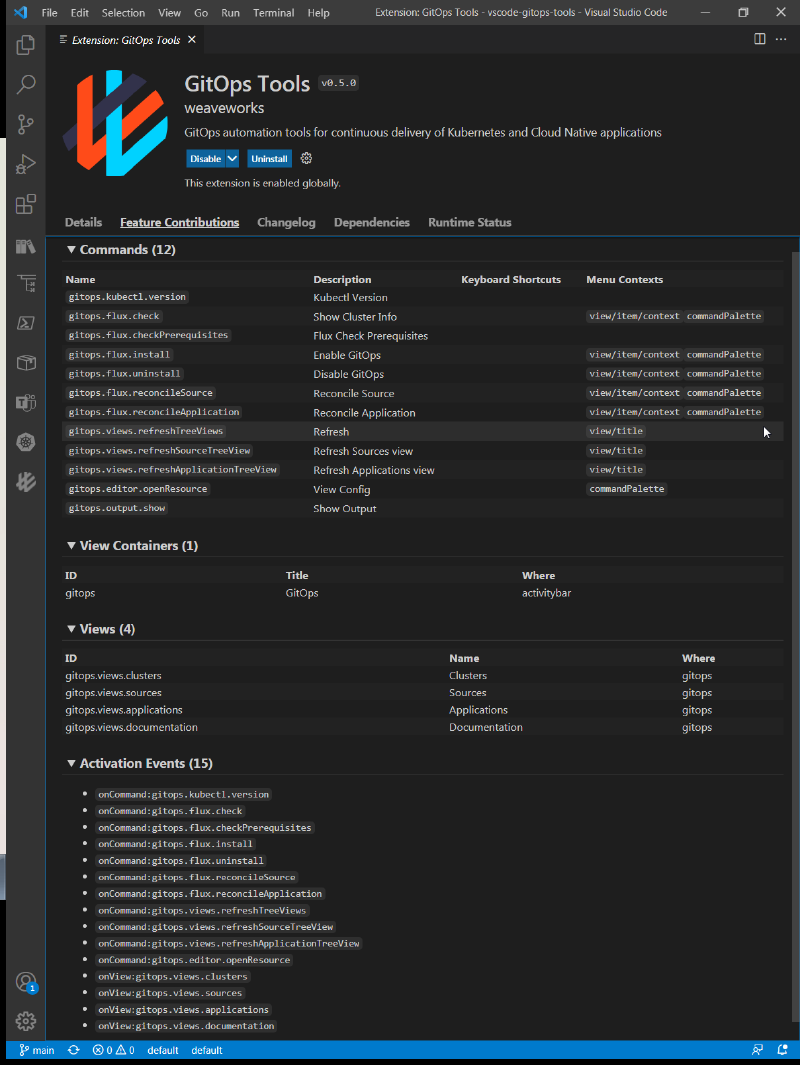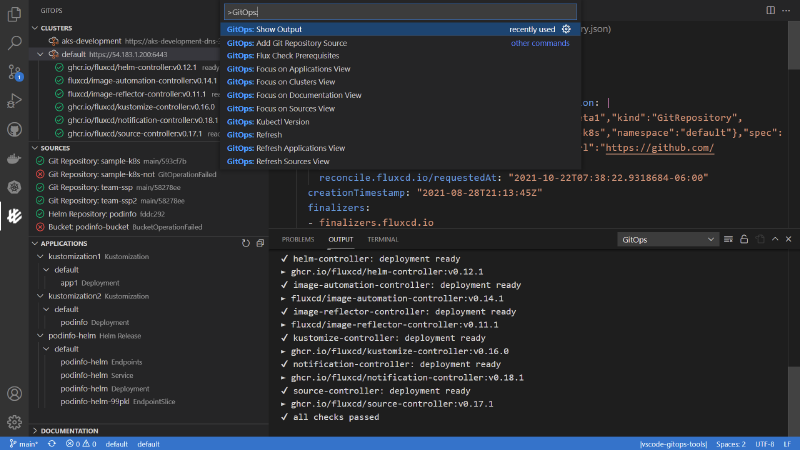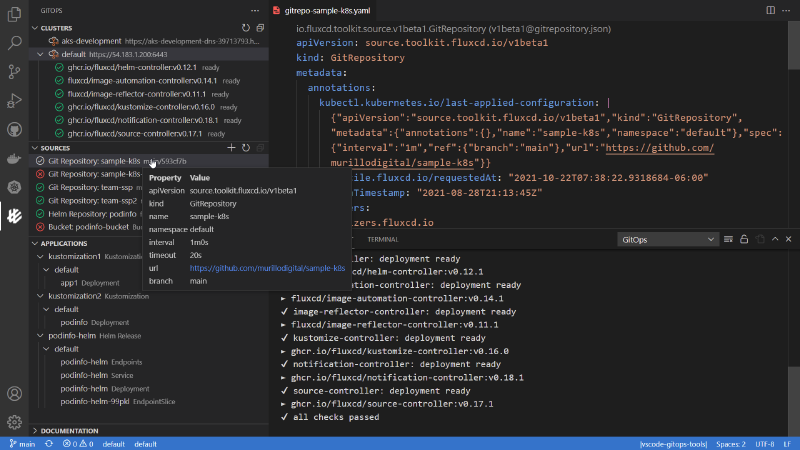You are viewing documentation for Flux version: 2.0
Version 2.0 of the documentation is no longer actively maintained. The site that you are currently viewing is an archived snapshot. For up-to-date documentation, see the latest version.
This article is more than one year old. Older articles may contain outdated content. Check that the information in the page has not become incorrect since its publication.
GitOps Without Leaving your IDE
Welcome to the second blog post in our Flux Ecosystem category! This time we are talking about one of the Flux UIs: it’s the VS Code GitOps Extension.
If you already use VS Code, this extension will be straight up your alley: it provides an intuitive way to manage, troubleshoot and operate your Kubernetes environment following the GitOps operating model, accelerating your development lifecycle and simplifying your continuous delivery pipelines. Of course it uses Flux under the hood.
Getting Started
Installing it: It’s in the Visual Studio Code Marketplace, so if you search for it in VS Code, it’s just a click of the Install button away.

Additionally, you will need to
Optionally, if available, the extension will make use of the az tool
(for Azure clusters) and docker as well.
With that out of the way, let’s get going and take the extension for a spin.
Drive everything from your IDE
Once you launch VS Code, you should see available clusters listed in the Clusters section of the GitOps extension. Now you can easily interact with the resources in each of the clusters. This makes it very straightforward to make changes in your manifests, commit and observe changes in the clusters without leaving your IDE.


The extension was designed so that you always have access to the
immediate tasks and events. Turning a manifest into a Kustomization or
Source? Right-click on the YAML file. View repositories, clusters,
sources, kustomizations, etc. - you see them at the first glance. View
GitOps Output panel with CLI command traces for diagnostics, cluster and
components versions, Flux controller logs, everything you might need to
debug. Enable/disable GitOps cluster operations with just a click.
Reconcile Sources and Workloads demand, and much more - links to
most-needed docs included.
Constantly evolving
The extension is rapidly growing new features. In 0.21.0, the team added OCI support which is supported natively in Flux. If you would like to see a video demo of this, check out this talk done by Annie Talvasto and Kingdon Barrett in the CNCF Webinar series.
In 0.22.0 basic support for Azure AKS/Arc was added. Future releases
will add a new beginner-friendly UI workflow for creating complete Flux
configurations using both generic Flux Source (Git, OCI, Bucket,
HelmRepository) and Workload (Kustomization, HelmRelease) resources
as well as Azure FluxConfig resources.

The team has begun work to transition the extension implementation from shell out commands to Javascript APIs for Kubernetes and Azure. Once that is complete, extension responsiveness and performance will improve dramatically.
Join the community
The team behind the extension loves feedback. If you like what you see, please star the extension on GitHub or leave an issue if something is missing, or send a PR if you can.
All feedback is very welcome!